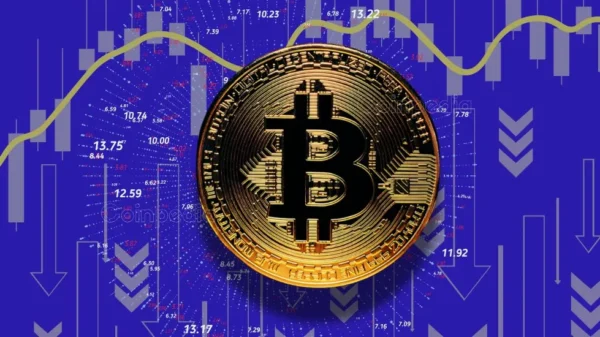The recent surge of Bitcoin encountered a significant roadblock at the $110,000 mark, as a combination of factors led to a sharp decline in market momentum. The latest data indicates that long-term holders are increasingly moving their assets to exchanges, contributing to a wave of profit-taking that has dampened bullish sentiment.
Despite an initial wave of positive news, including political developments and potential government initiatives, these factors were insufficient to push Bitcoin past a critical psychological resistance level. According to XWIN Research, the optimism in the market failed to translate into sustained buying pressure, leading to weakened investor confidence.
One of the primary challenges stems from macroeconomic conditions. Although the Federal Reserve made a move to cut interest rates in October, Chairman Jerome Powell”s comments regarding the uncertain nature of future rate cuts have contributed to a cautious atmosphere among traders. This uncertainty has led many investors to lock in profits rather than hold onto their positions, especially within a market that remains susceptible to various external pressures.
Regulatory ambiguity further complicates the landscape. Although certain political figures, like former President Donald Trump, appear to support cryptocurrency through initiatives such as the GENIUS Act, there remains a patchwork of regulations across states that creates a challenging environment for institutional players. The XWIN report highlights a tug-of-war between political backing and regulatory concerns that has left many institutions hesitant to fully engage with the market.
Long-term holders are notably changing their behavior. On-chain metrics show that inflows from these holders to exchanges have nearly doubled, indicating a significant increase in selling activity. Analyst Ali Martinez noted that since July, long-term holders have sold a total of 371,584 BTC, further stressing the supply-demand dynamics in the market. The price range between $107,000 and $118,000 has been identified as a substantial resistance zone, making it difficult for new buying interest to sufficiently counteract the selling pressure.
Furthermore, the LTH-SOPR indicator, which tracks profit-taking behavior among long-term holders, currently sits around 1.6. This figure marks a decline from its mid-year peak and suggests that while holders are still selling, they are doing so with less conviction than in earlier months. The once robust sentiment is faltering as previous enthusiasm dwindles.
Market sentiment overall has not rebounded from a series of setbacks, including significant liquidations of long positions and operational issues at platforms like MEXC. The reversal of ETF inflows, which saw outflows totaling $1.5 billion at the end of the month, has stripped the market of essential liquidity, further complicating recovery efforts.
However, there is a silver lining. Reports indicate that while retail investors are panicking and offloading their holdings, larger entities such as banks and whales continue to accumulate Bitcoin quietly. This behavior mirrors patterns seen in previous market cycles where substantial players position themselves for future gains amidst widespread fear.
As of the latest updates, Bitcoin is trading at approximately $105,266, reflecting a decrease of 0.87% in the past 24 hours and a decline of 1.17% over the last week. The market watches closely to see if it can regain its footing in the face of ongoing challenges.



















































